
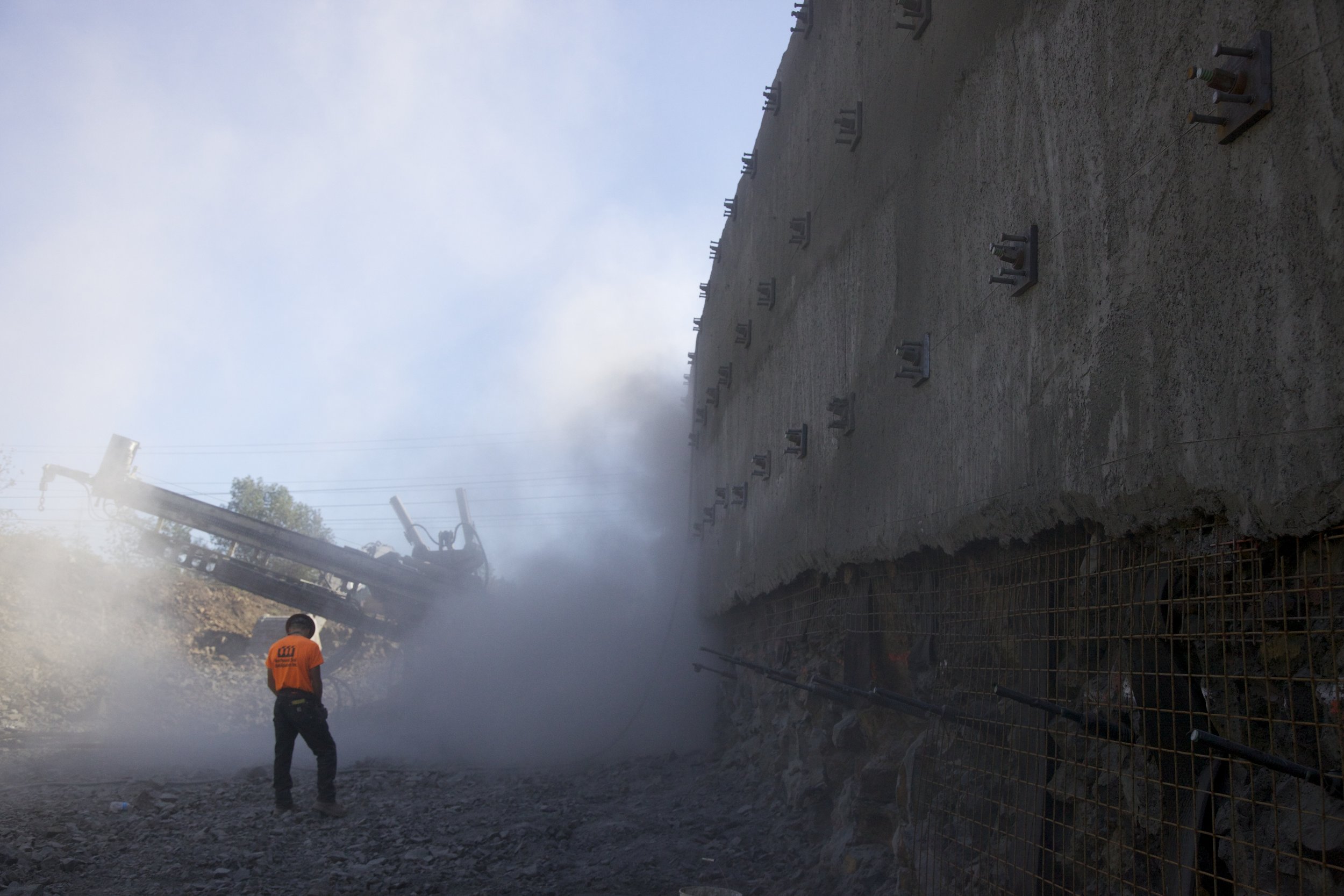
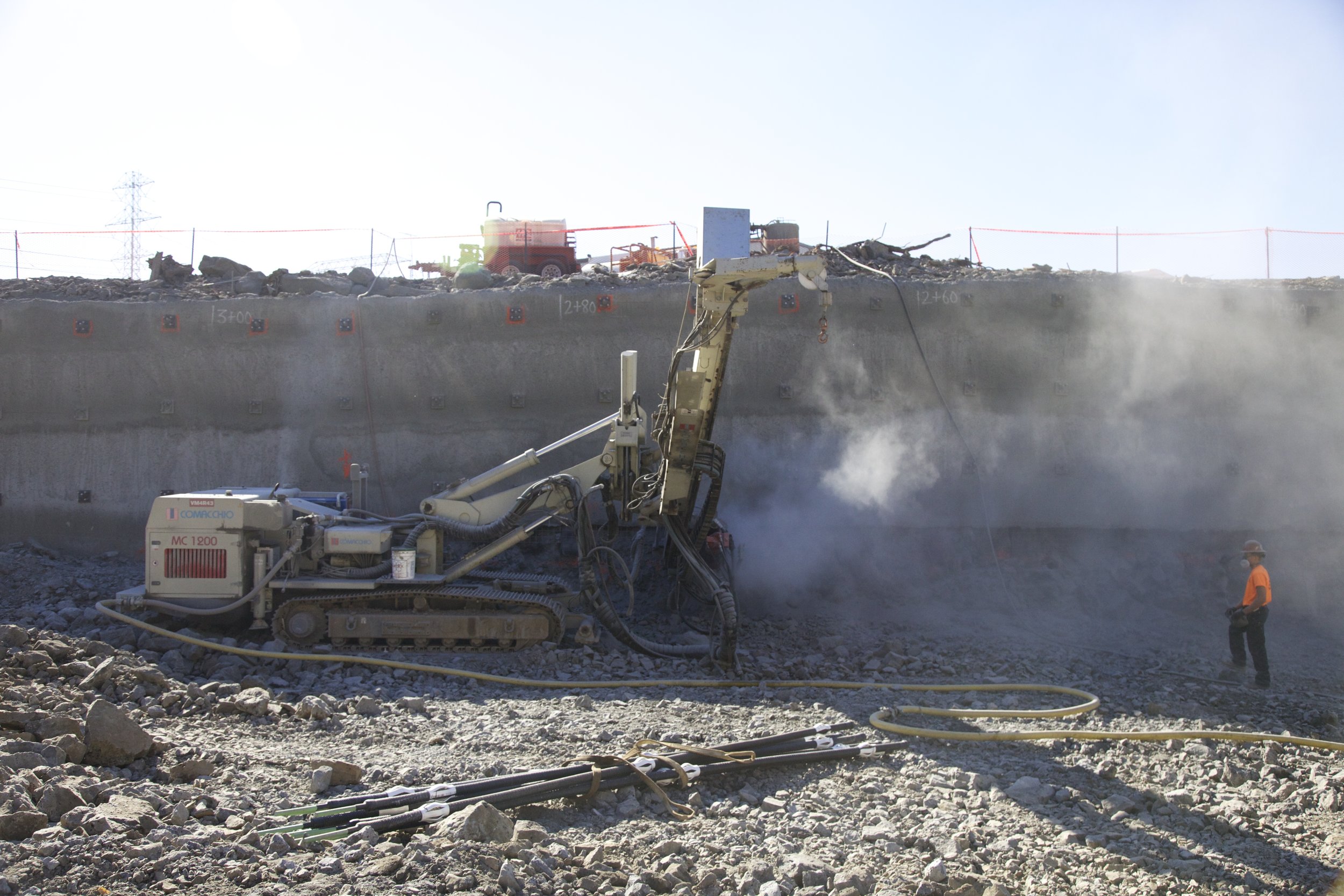
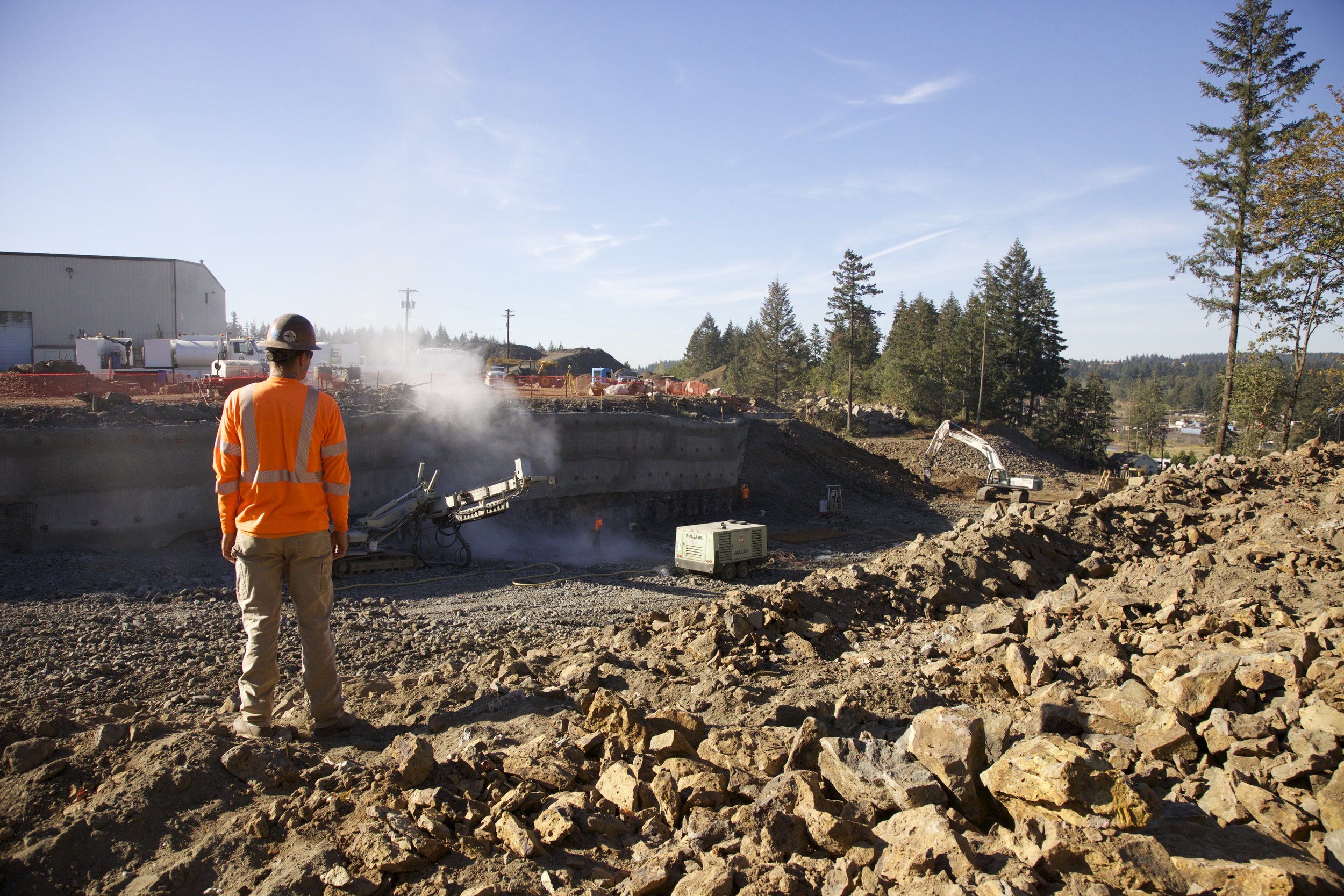
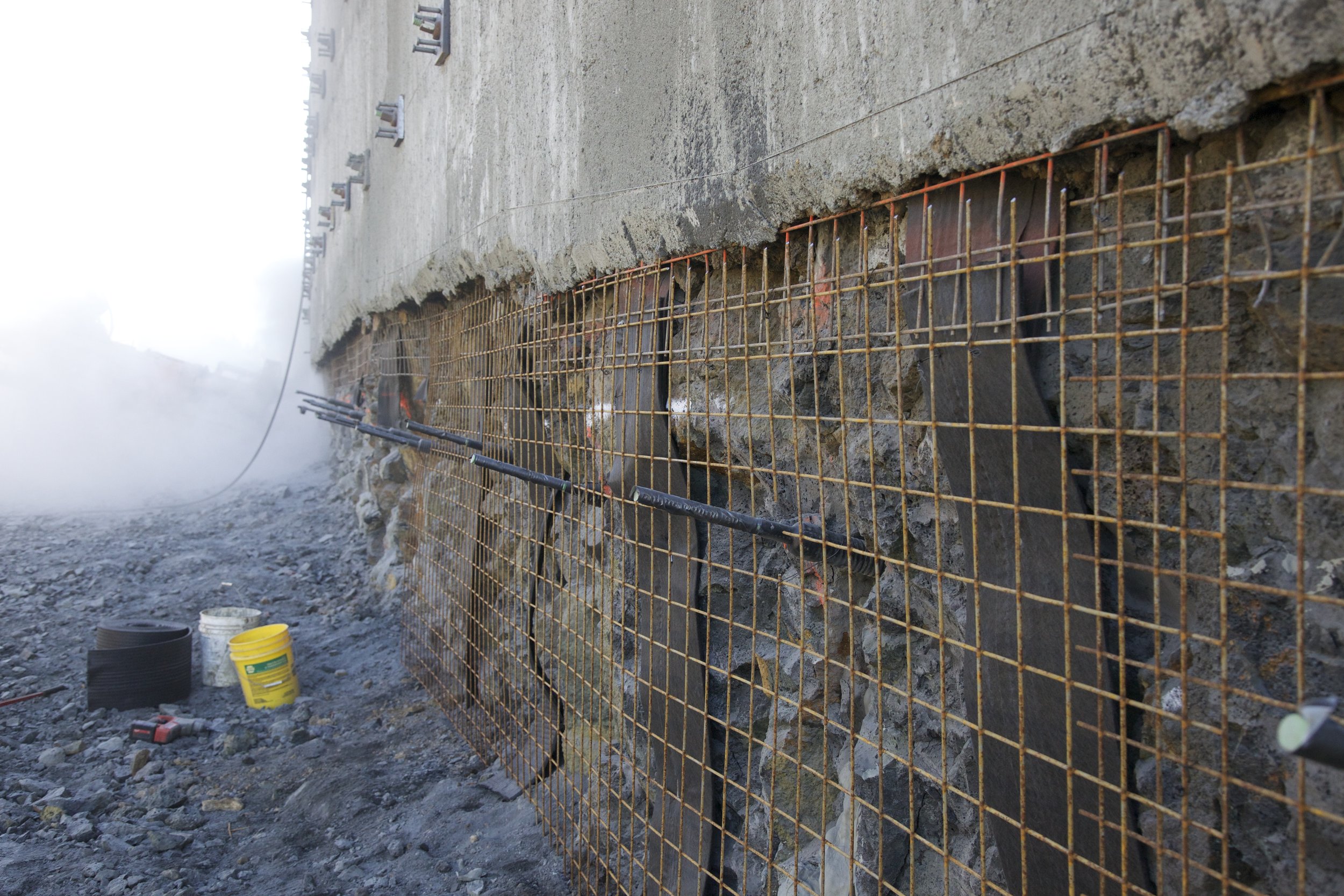

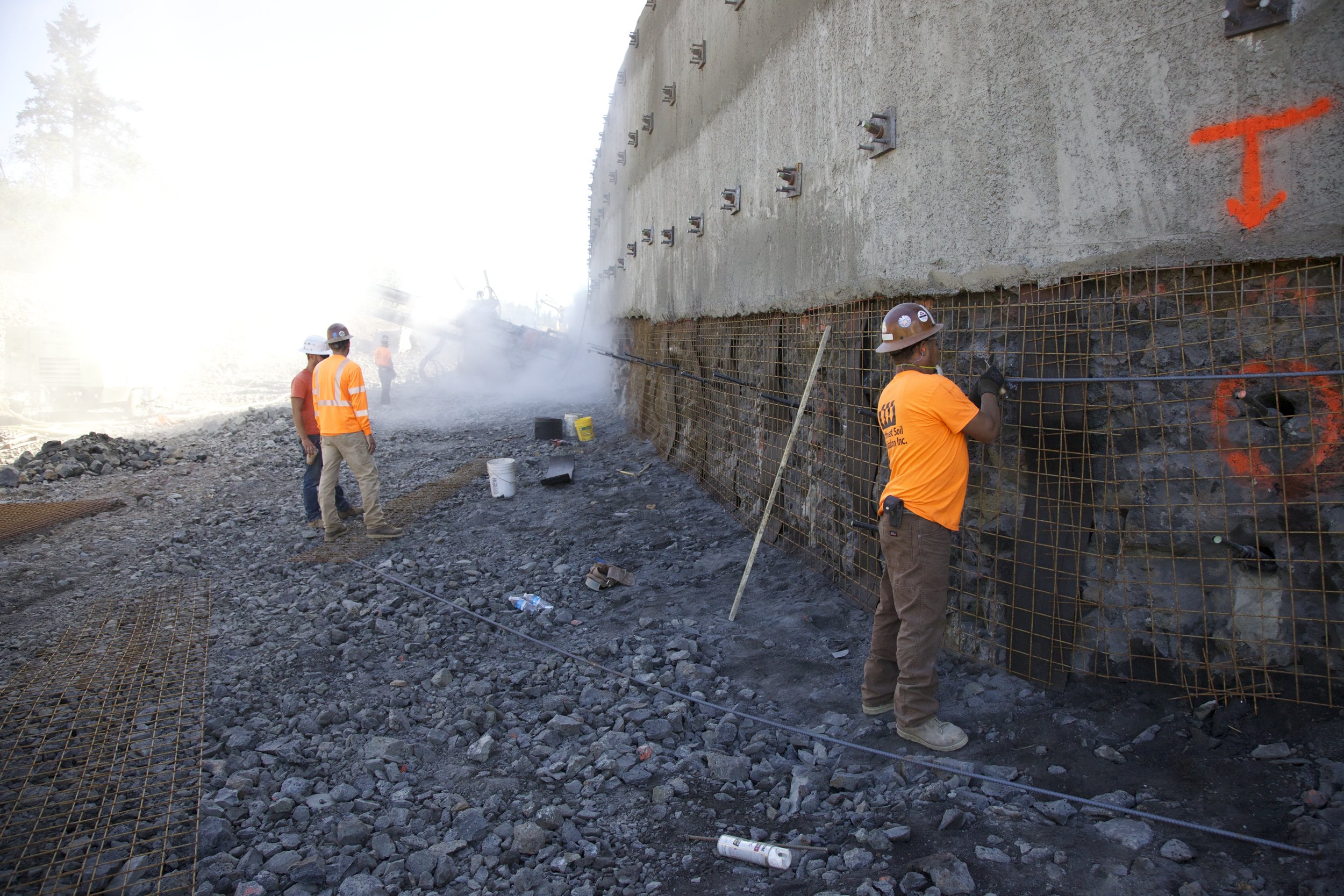
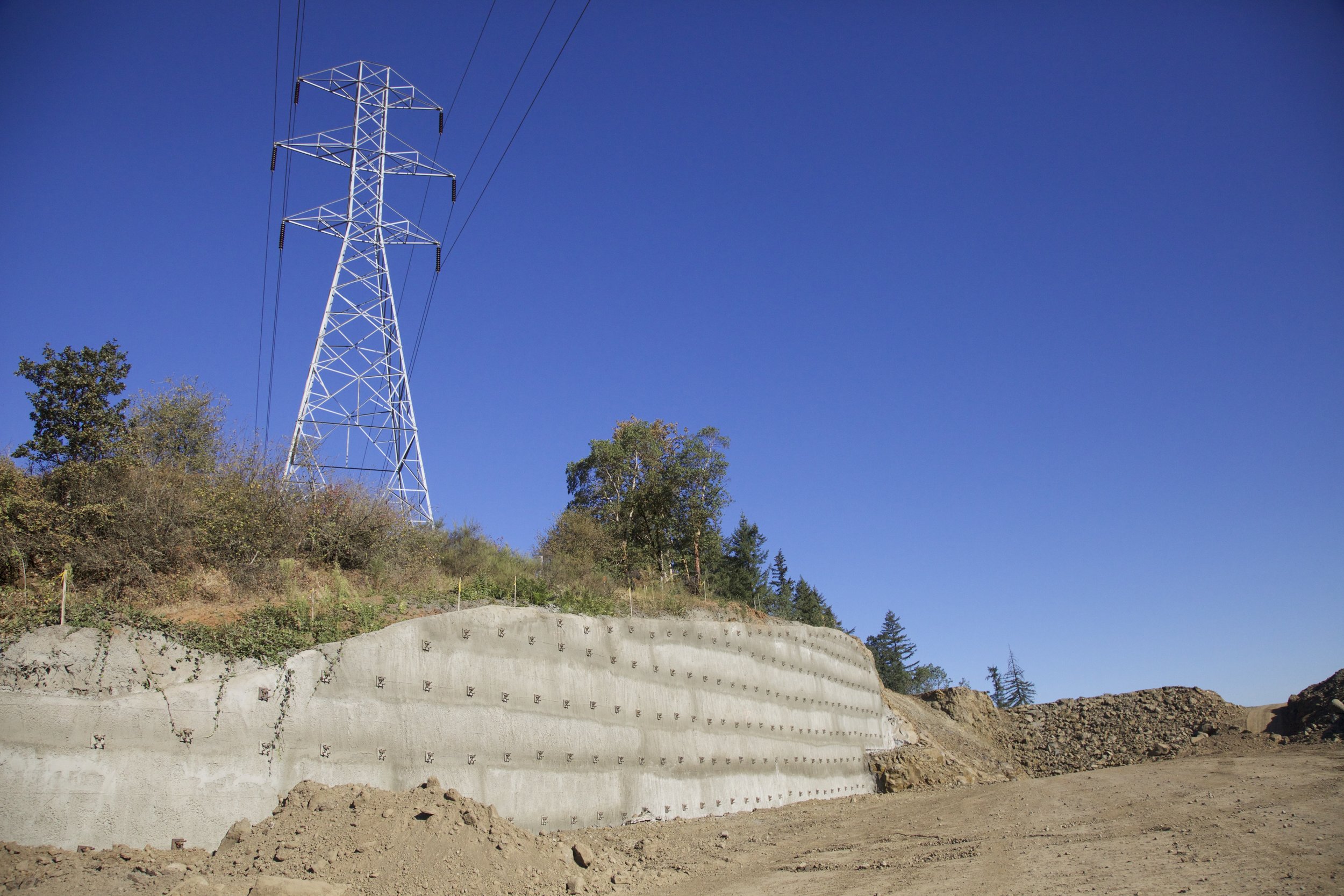
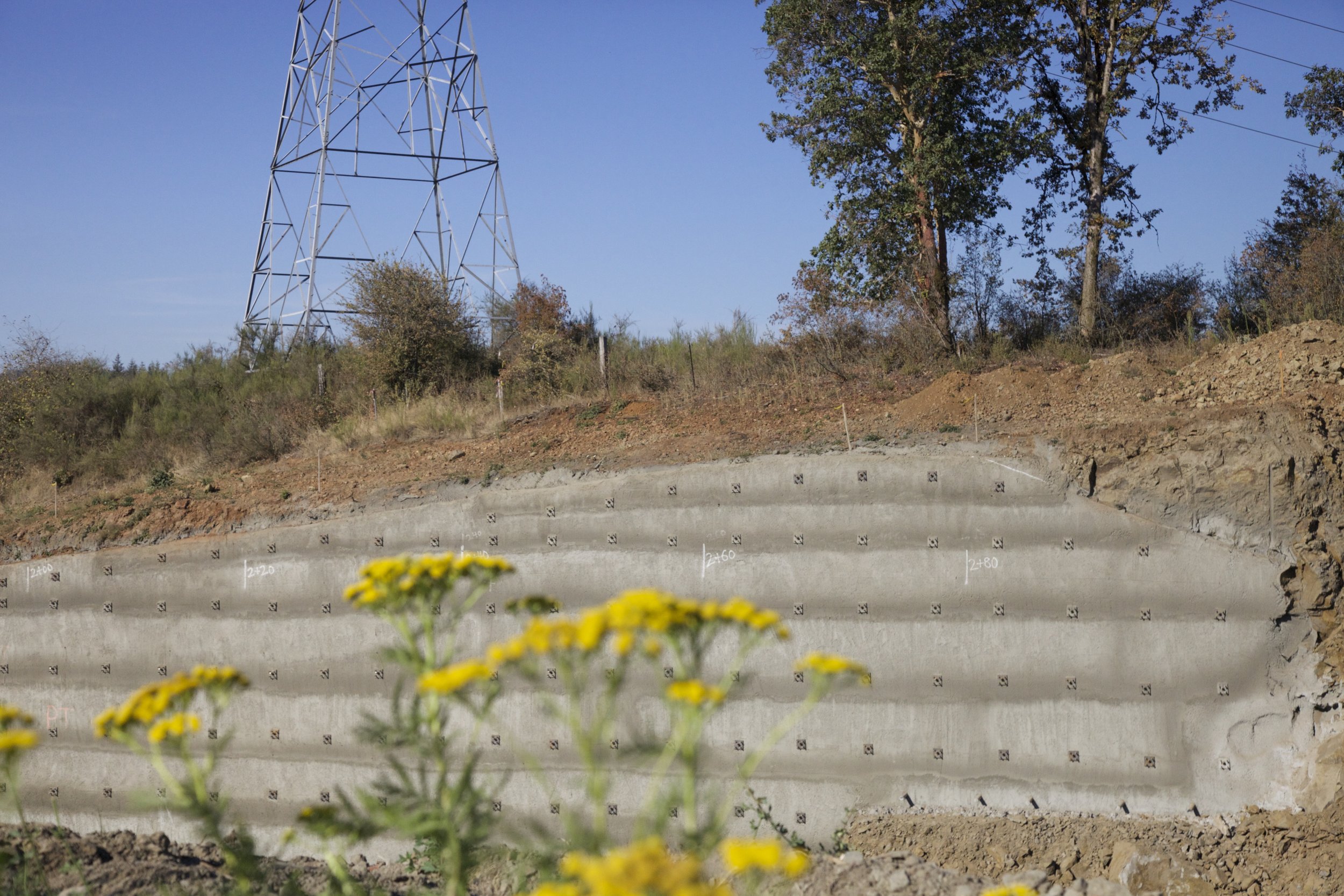
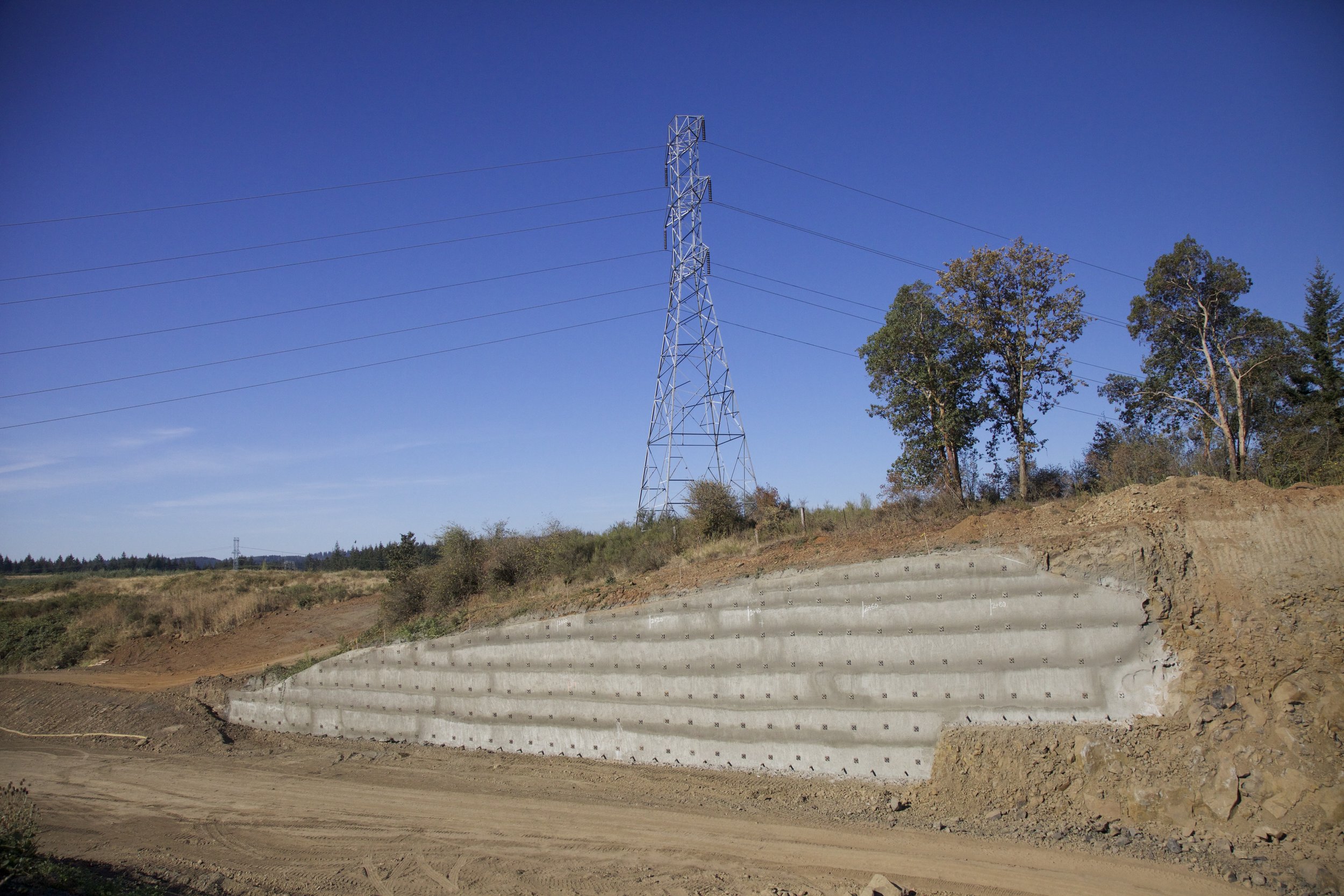




retaining walls and excavation Shoring
SOIL NAils | Shotcrete
Soil nail wall construction is typically completed as a "top-down" process of vertical stages of cut and reinforcement. The first segment is created by cutting a five to six foot vertical face along the future wall alignment. A row of horizontal soil nails are drilled and grouted along the lower portion of the cut face on five to six foot centers — depending on soil conditions a tighter spacing may be required. Soil nail heads are left protruding approximately one foot beyond the cut face surface. A layer of shotcrete and mesh reinforcement is applied over the nail heads, and a bearing plate and nut are installed on the soil nails. Once the first vertical section of the wall is complete, a second vertical lift may be constructed. The process may be continued over a series of steps to create walls as high as 35 feet or more.
Soil nails are considered a “passive” element and generate resistance in response to earth movement. These systems can be utilized for vertical cut support for conventional footing and subgrade/basement walls, as well as single side form applications and structural shotcrete applications where there is no backfill requirement. Soil nail and shotcrete systems typically rank among the most cost effective earth support systems for “top-down” construction.
soldier piles and TIE-BACKS
Soldier Pile and Soldier Pile / Tie-back systems are considered conventional shoring systems. Generally, NW Soil installs soldier pile systems for jobs designed by others or in areas where lateral supports cannot be installed due to proximity to property lines and right-of-way. Soldier pile/tie-back systems are utilize a combination of cantilever resistance in the soldier piles until lateral support is achieved by installing tie-back anchors. The tie back anchors are typically stressed or tensioned to minimize potential earth movements as the excavation progresses. The advantage of the soldier pile/tie-back system is the ability to provide lateral support to greater depths with less lateral movement compared to cantilevered soldier pile systems. In addition, the overall depth of the soldier pile component can be significantly less than a similar soldier pile supported excavation, with an overall pile depth of 8 to 10 feet below the excavation base. The soldier pile tie-back systems are typically more expensive per square foot of exposed face than either cantilevered soldier pile or soil nail systems. In areas where earth settlement may not be tolerated, the addition of the tensioned tie-back may be the only option.
hybrid shoring systems
Hybrid shoring systems have many variations, but most commonly consist of vertical elements supporting the upper 7 to 10 feet of an excavation followed by soil nails below. The vertical elements are comprised of small diameter drilled and grouted elements and shotcrete facing supported by a tightly spaced row of soil nails at the support line for the vertical elements. The system has the advantage of moving the depth of the initial row of soil nails to below the depth of common utility pathways frequently located near the top of excavations, particularly in urban areas where soldier piles and tie-back systems are typically installed. The clear advantage is the significantly reduced cost of the hybrid systems, and the overall speed of the installation compared to a soldier pile or soldier pile tie-back system. The disadvantage is that the soil nail is a passive or un-tensioned anchor, and may allow somewhat larger earth settlements than the tensioned tie-back type systems. If no buildings or other relatively heavy structures are involved, hybrid soil nail systems are typically appropriate.
